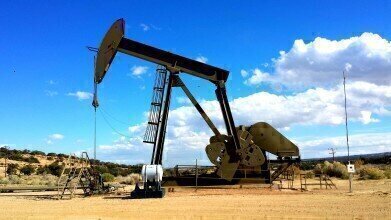Fuel for thought
Secondary Oil Recovery – The Texas Three-Step
Sep 23 2015
Oil and gas are notoriously unrenewable resources, and as the world starts to realise its supplies are running short companies are becoming increasingly inventive in their efforts to extract every last drop. Today, reserves that were once inaccessible due to their location in impenetrable geological formations or their high price of harvesting are now being mined in full force. Why? It’s all thanks to new advances in drilling technology, combined with an increase in market demand. This has led to oil and gas companies pulling out all stops in order to harvest resources that they’d previously ruled out as unattainable. The process is called secondary oil production.
Under pressure
So how exactly do these companies manage to pull off such a feat? When it comes to secondary oil production it’s all about the pressure. Companies resort to the process when pressure inside a well drops to levels that no longer support primary production techniques.
Pressure plays an integral role in harvesting oil from natural underground rock formations, with the force pushing oil deposits out from the fissures and pores in which it collects. However this initial pressure doesn’t last forever, and in order to keep harvesting oil when pressure drops drillers are forced to adopt a new technique. Cue secondary oil recovery.
Secondary Oil Recovery 1, 2, 3
The process of secondary oil recovery can be divided into three major categories - thermal, gas injection and chemical injection.
Gas injection is the most popular technique, utilising elements such as nitrogen or carbon dioxide. These are injected into the reservoir where they expand to force oil through geographical formations and into the well. This technique is used by around 60% of secondary oil recovery operations in the U.S.
Thermal recovery is the second most used technique, employed by 40% of the USA’s oil wells. It uses heat to stimulate production, with steam injected into reservoirs to lower oil viscosity in order to maximise flow through rock formations.
Chemical injection is the least popular method, used by just 1% of US wells. The process relies on micellar polymers and water solutions to reduce the friction between oil and water. In turn, this lowers viscosity and quickens oil flow.
With oil and gas supplies rapidly depleting, secondary recovery techniques are becoming increasingly important. ‘Nitrogen Determination in the Times of Scarcity of Natural Resources’ explores how information regarding the composition of crude oil, intermediate and final products along the refinery process is an integral part of establishing effective processing strategies.
Digital Edition
PIN 25.6 Buyers' Guide
January 2025
Buyers' Guide Directory - Product Listings by Category - Suppliers Listings (A-Z) Articles Analytical Instrumentation - ASTM D7042: The Quantum Leap in Viscosity Testing Technology -...
View all digital editions
Events
Jan 20 2025 San Diego, CA, USA
Jan 22 2025 Tokyo, Japan
Jan 25 2025 San Diego, CA, USA
SPE Hydraulic Fracturing Technology Conference and Exhibition
Feb 04 2025 The Woodlands, TX, USA
Feb 05 2025 Guangzhou, China



















